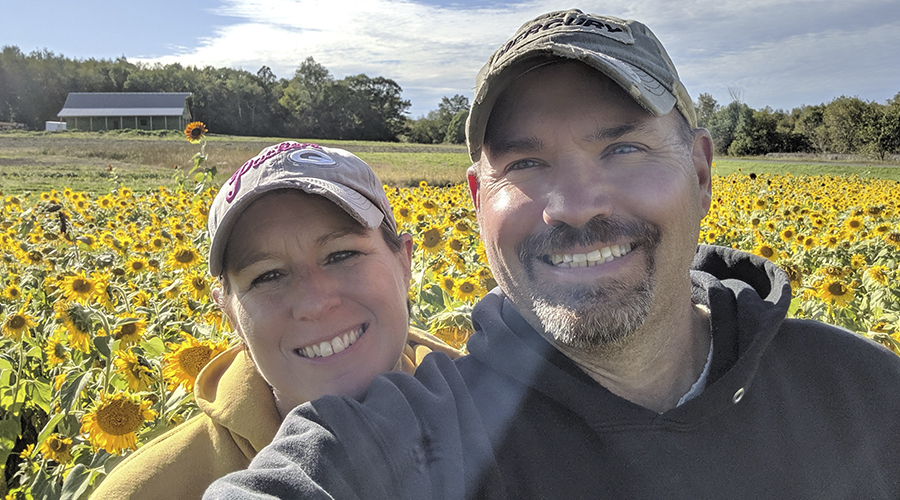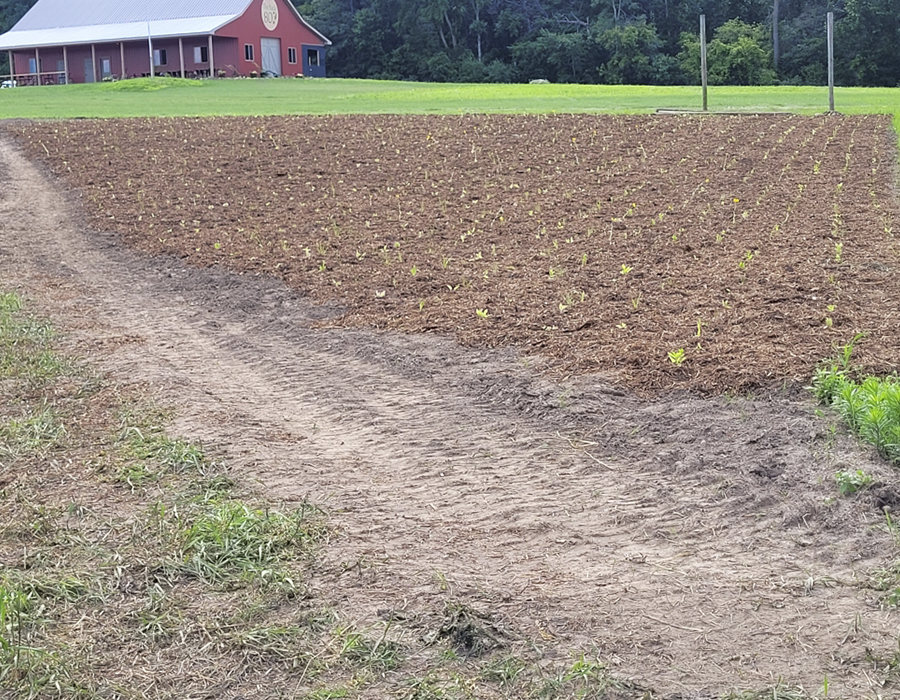Dan and Sheila Dittman of New Richmond, Wisconsin, run a produce farm called The Back 80 and grow a wide variety of vegetables and grains using organic principles for a Community Supported Agriculture (CSA) program, farmers markets, and direct sales.
Their land has been in Dan’s family since his grandparents purchased it in 1950, and it had previously been farmed using conventional methods.
Dan and Sheila first contacted Natural Resources Conservation Service (NRCS) professionals at their local USDA Service Center for guidance on repairing a non-functioning grassed waterway, which led to a conservation plan that addressed their resource concerns.

“Our land was farmed conventionally for 50-plus years, and the waterways needed repair,” Dan explained. “Because we farm on highly erodible land, it is very important that we have proper water run off that doesn’t wash through our garden beds.”
Dan and Sheila received financial assistance through the Environmental Quality Incentives Program (EQIP) to implement conservation practices such as grassed waterway, wildlife habitat planting, and tree/shrub establishment, thanks to the Inflation Reduction Act.

“We've been turned down for many things so far in our career,” said Dan, “Being accepted felt good!”
The Inflation Reduction Act provides an additional $19.5 billion for NRCS to deliver financial and technical assistance to producers through existing USDA conservation programs like EQIP. When applied appropriately, these activities are expected to reduce greenhouse gas emissions or increase carbon sequestration.
“This was our first time working with NRCS,” said Sheila, “and the people we've dealt with have been really great and helpful. NRCS is a very accommodating organization.”
Luke Breitenbach, NRCS Soil Conservationist with the USDA Service Center in Baldwin, worked one-on-one with Dan and Sheila to install their wildlife plantings and noted that the habitat planting and tree/shrub establishment, a benefit to pollinators, built onto the conservation efforts of their initial grassed waterway request. Establishing wildlife habitat plantings, trees, and shrubs can help sequester carbon and have other natural resource co-benefits.
“Pollinator habitats are a very beneficial part of vegetable production,” said Dan. “Not only do they add beauty to the farm, but they also create a natural space for pollinators and beneficial insects as well.”
Since working with NRCS, Dan and Sheila have accomplished a variety of conservation projects on their land. All their contracted grassed waterways have been installed and are doing great, including their recently reseeded main waterway. They have planted a flourishing pollinator habitat with several thousand prairie plugs they grew independently.
Dan and Sheila recommend that other producers look into getting assistance from NRCS.
“You'll never know if it's possible if you don't ask,” said Dan, “We'd just like to thank NRCS for helping us make The Back 80 the best it can [be] in soil and nature conservation.”
Mindi Rambo is a public affairs specialist for NRCS in Idaho.


